
Spaghetti is an inexpensive kitchen staple that is fast and easy to make. Spaghetti noodles provide a base for a wide variety of dishes, from the reliable spaghetti bolognese to Italian spaghetti and clams. A perfectly cooked batch of noodles is an essential starting point for your family's favorite spaghetti recipe.
Getting Started
Use a large pot with lots of cold water -- about 4 pints of water to every 8 oz. of pasta. Using a small pan with too little water allows the noodles to clump together and cook unevenly. Giving the pasta plenty of room to boil keeps it moving to ensure the most uniform results. It also helps wash away starch to keep the pasta from becoming sticky and mushy.
Boiling
Bring the water to a hard, rolling boil. When the water is at a full boil, it won't stop boiling when you stir it. Add 1 tbsp. of salt after the water starts to boil. Put the spaghetti noodles into the pot, and use a wooden spoon to press the pasta down into the water as it softens until all of the pasta is submerged and flexible. Some people break the spaghetti in half before putting it into the pot. Stir it once to separate the strands. Boil the noodles uncovered for about eight to 12 minutes, starting the timer when the water returns to a boil.
Checking for Doneness
Cooking times will vary for different brands and thicknesses of spaghetti. You may have heard about throwing a noodle on the ceiling to see if it sticks, but the only way to tell when the spaghetti is done is to taste it. Take a noodle from the pot after about 7 minutes and when it's cool enough to taste, chew it. It should be tender, yet firm, or "al dente." Keep checking at one-minute intervals until the spaghetti is done.
Draining & Serving
Place a colander in the sink. Pour some of the hot cooking water around the colander as you begin to pour out the pasta to heat the colander, then pour out the noodles and the rest of the water. Give the colander a shake to release water, but don't worry about draining every bit of the water. Leaving some moisture on the noodles keeps them from having a dry texture. Pasta must not be allowed to sit after cooking or it will quickly become a sticky, clumpy mass. Whether you are using traditional marinara sauce or tossing the spaghetti with creamy dressing, sauce and serve it as quickly as possible after draining. Serve spaghetti in a hot, deep plate or shallow bowl to keep it warm.
Related Articles

How to Cook Spaghetti to Use the Next ...

How to Cook & Freeze Spaghetti Noodles
How to Cook Large Amounts of Noodles ...

How to Boil Pasta Noodles

How to Cook Vermicelli Noodles Without ...

How to Add Food Coloring to Pasta

How to Cook Lasagna Noodles so They ...
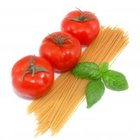
How to Make Spaghetti Noodles

How to Cook Lasagna Noodles Al Dente
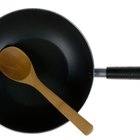
How to Fry Raw Spaghetti

How to Cook Penne Rigate Noodles in the ...

Can You Boil Water & Cook Spaghetti in ...

How to Cook Orecchiette

How to Cook Pasta in the Microwave or ...

How to Cook Udon

How to Make Spaghetti in a Boil Bag
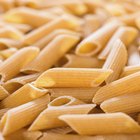
How to Cook Whole Grain Pasta

How to Cook Vietnamese Rice Stick ...
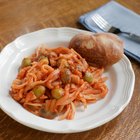
How to Make Crock-Pot Spaghetti
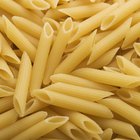
Calories in Pasta Noodles
References
Photo Credits
Thinkstock/Comstock/Getty Images